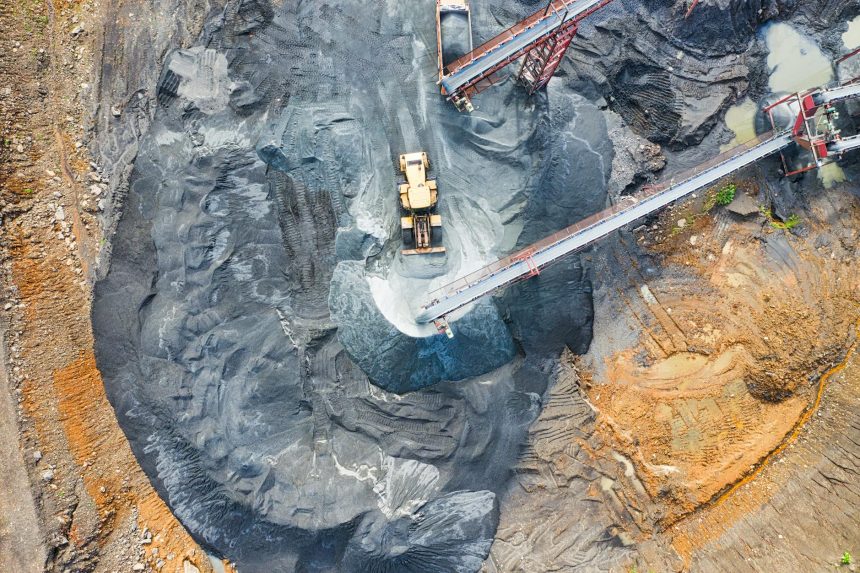# China’s Rare Earth Grip: Trump’s Bold Tech Strategy Revealed
The global technological landscape is undergoing a seismic shift, and at its epicenter lies a critical, yet often overlooked, resource: rare-earth minerals. As China’s dominance over the production of these essential elements and battery technology solidifies, former President Trump has signaled a strategic pivot, aiming to challenge this stronghold. This move, rooted in a press release that has sent ripples through the industry, isn’t just about minerals; it’s about national security, economic leverage, and the future of innovation. But what does this mean for the United States, for global supply chains, and for the technologies that power our modern lives?
## The Unseen Power of Rare Earths
Rare-earth elements (REEs) are not rare in the Earth’s crust, but they are rarely found in economically viable concentrations. These 17 metallic elements, including neodymium, dysprosium, and terbium, are indispensable components in a vast array of high-tech applications. From the powerful magnets in electric vehicle motors and wind turbines to the advanced displays in smartphones and the sophisticated guidance systems in military aircraft, REEs are the silent enablers of our technological age.
### China’s Established Monopoly
For decades, China has strategically cultivated its position as the undisputed global leader in rare-earth production and processing. This dominance stems from several factors:
* **Vast Reserves:** China possesses some of the world’s largest known reserves of rare-earth minerals.
* **Low Production Costs:** Historically, China has benefited from lower labor and environmental compliance costs, allowing it to undercut competitors.
* **Integrated Supply Chain:** Beijing has invested heavily in building a comprehensive supply chain, from mining and extraction to refining and manufacturing of rare-earth-based products.
* **Export Controls:** In the past, China has been known to leverage its position by restricting exports, demonstrating the strategic importance it places on these resources.
This near-monopoly has given China significant leverage on the global stage, influencing international trade and technological development.
## Trump’s Strategic Response: A New Era of Resource Diplomacy?
The press release indicating President Trump’s interest in replicating China’s playbook suggests a proactive approach to securing America’s technological future. This isn’t about mirroring China’s actions in a tit-for-tat manner, but rather about understanding the strategic importance of controlling critical resources and the advanced manufacturing capabilities that depend on them.
### Key Pillars of the Proposed Strategy
While specific details remain to be fully elucidated, the underlying principles of such a strategy likely encompass several key areas:
#### 1. Domestic Resource Development
The most direct approach involves revitalizing and expanding domestic rare-earth mining and processing capabilities. This would entail:
* **Streamlining Permitting:** Reducing bureaucratic hurdles and expediting the environmental review process for new mining operations.
* **Investing in Technology:** Funding research and development into more efficient and environmentally sound extraction and separation techniques.
* **Incentivizing Production:** Offering tax credits, subsidies, and other financial incentives to encourage private companies to invest in domestic rare-earth projects.
#### 2. Diversifying Global Supply Chains
Recognizing that complete domestic self-sufficiency might be a long-term goal, a crucial element will be to foster partnerships with allied nations to diversify the global supply of rare earths. This could involve:
* **Collaborative Mining Ventures:** Supporting joint ventures with countries like Australia, Canada, and potentially nations in Africa and South America that have significant rare-earth deposits.
* **Building Processing Infrastructure:** Working with allies to develop shared processing facilities, reducing reliance on Chinese infrastructure.
* **Strategic Stockpiling:** Establishing robust national stockpiles of critical rare-earth minerals and finished components.
#### 3. Strengthening Battery Technology and Manufacturing
Rare earths are integral to the advanced battery technology that powers electric vehicles and renewable energy storage. Trump’s focus suggests an intent to:
* **Boost EV Battery Production:** Encouraging the onshore manufacturing of EV batteries and the components that go into them, including those that rely on rare-earth magnets.
* **Research into Alternatives:** Investing in R&D for battery chemistries that are less reliant on rare-earth elements, though this is a complex and long-term endeavor.
* **Securing Raw Materials for Batteries:** Ensuring a stable and secure supply of lithium, cobalt, nickel, and other critical battery minerals, which also face supply chain vulnerabilities.
## The Broader Implications and Challenges
This strategic shift, if fully implemented, carries profound implications for the global economy and geopolitical landscape.
### Economic Repercussions
* **Job Creation:** Revitalizing domestic mining and manufacturing sectors could lead to significant job growth in the United States.
* **Reduced Trade Deficits:** A more robust domestic supply chain could help reduce reliance on imports and improve the trade balance for critical goods.
* **Increased Costs:** Initially, domestic production may be more expensive than sourcing from China, potentially leading to higher costs for consumers and businesses. This is a trade-off for enhanced security.
### Geopolitical Dynamics
* **Shifting Alliances:** A focus on resource security could reshape international partnerships, fostering closer ties with nations rich in critical minerals.
* **Trade Tensions:** Any move to significantly disrupt existing supply chains could lead to increased trade friction with China and other nations.
* **National Security:** Securing access to rare earths is directly linked to national defense capabilities, ensuring that the U.S. military can access the advanced components it needs.
### Technological Innovation
* **Accelerated R&D:** A concerted effort to develop new extraction methods, recycling technologies, and alternative materials could spur significant innovation.
* **Resilience of Tech Sector:** A diversified and secure supply chain would make the U.S. technology sector more resilient to external shocks.
## The Path Forward: Hurdles and Opportunities
The ambition to challenge China’s rare-earth dominance is laudable, but the path is fraught with challenges.
**Challenges:**
* **Environmental Concerns:** Mining and processing rare earths can have significant environmental impacts. Developing sustainable practices will be paramount.
* **Technological Sophistication:** China has decades of expertise in refining and processing. Replicating this level of technological prowess will require substantial investment and time.
* **Global Market Dynamics:** The global market for rare earths is complex. Any policy shifts will need to navigate existing international trade agreements and market forces.
* **Long Investment Horizons:** Developing new mines and processing facilities takes years, if not decades, and requires massive capital investment with uncertain returns.
**Opportunities:**
* **Innovation in Recycling:** The U.S. has an opportunity to become a leader in rare-earth recycling, turning e-waste into a valuable domestic resource.
* **Partnerships with Allies:** Collaborative efforts with like-minded nations can create a more robust and diversified global supply chain, reducing the leverage of any single nation.
* **Strategic Advantage:** Achieving greater self-sufficiency in critical minerals and advanced technologies would provide the U.S. with a significant strategic advantage in the 21st century.
### What the Public Should Expect
For the general audience, this strategic push means:
* **Increased Awareness:** A greater understanding of the critical role rare earths play in everyday technology.
* **Potential Cost Fluctuations:** While long-term stability is the goal, short-term price adjustments for certain high-tech goods might occur.
* **Focus on American Manufacturing:** A renewed emphasis on domestic production of goods that rely on these minerals.
* **Geopolitical Significance:** A clearer picture of how resource control influences international relations.
The press release signals a decisive move towards reclaiming a vital segment of the global supply chain. It’s a recognition that in an era defined by technological advancement, control over the fundamental building blocks of that technology is paramount. The journey to diminish China’s rare-earth grip will be long and complex, requiring sustained political will, significant investment, and innovative solutions. However, the stakes—national security, economic prosperity, and technological leadership—are simply too high to ignore.
The United States must now chart a course that balances economic realities with strategic imperatives, fostering domestic capabilities while forging strong international alliances. This is not merely about minerals; it’s about securing the future of innovation and American competitiveness on the global stage.
copyright 2025 thebossmind.com
Source: [https://www.reuters.com/markets/commodities/china-rare-earth-dominance-raises-us-concerns-trump-eyes-strategy-2024-06-11/](https://www.reuters.com/markets/commodities/china-rare-earth-dominance-raises-us-concerns-trump-eyes-strategy-2024-06-11/)
Source: [https://www.brookings.edu/articles/rare-earths-a-critical-element-for-us-energy-and-national-security/](https://www.brookings.edu/articles/rare-earths-a-critical-element-for-us-energy-and-national-security/)




![AI-Driven Operations: 3.7x ROI Breakthrough Revealed --- ## The AI-Powered Revolution: Unlocking a 3.7x ROI by Reimagining Operations The operational landscape is undergoing a seismic shift, driven by the transformative power of artificial intelligence. A recent press release highlights a staggering finding: businesses that rebuild their operations around operational intelligence, rather than merely retrofitting existing systems with AI point tools, are achieving an incredible 3.7x return on investment (ROI). This isn't just about incremental improvements; it's a fundamental paradigm shift that promises to redefine efficiency, agility, and profitability for mid-sized enterprises and beyond. For years, businesses have grappled with the complexities of modern operations. Data is abundant, yet often siloed and underutilized. Processes can be inefficient, leading to wasted resources and missed opportunities. The promise of AI has been dangled as a solution, but its fragmented application has often fallen short of delivering the promised transformative results. This new research signals a crucial evolution in how we should approach AI integration, moving from a piecemeal strategy to a holistic, intelligence-driven core. ### Why the "Retrofit" Approach Falls Short Many organizations have adopted a "retrofit" mentality when it comes to AI. They identify specific pain points – perhaps in customer service, supply chain management, or predictive maintenance – and apply AI-powered tools to address those isolated issues. While these point solutions can offer some benefits, they often operate in silos, failing to integrate with broader operational workflows. This fragmented approach leads to several challenges: * **Data Silos:** AI tools, when implemented in isolation, may not be able to access or interpret data from other parts of the business, limiting their effectiveness. * **Process Gaps:** Retrofitted tools might not seamlessly integrate with existing processes, creating new manual workarounds or bottlenecks. * **Limited Scalability:** Point solutions are often difficult to scale across the entire organization, hindering widespread adoption and impact. * **Suboptimal ROI:** Without a cohesive strategy, the cumulative ROI from multiple, disconnected AI tools is often far lower than what's achievable with a unified approach. ### The Power of Operational Intelligence: A New Foundation for AI The breakthrough lies in shifting the focus from individual tools to building operations *around* operational intelligence. This means viewing AI not as an add-on, but as the foundational element that drives decision-making, automation, and optimization across the entire business. Operational intelligence, in this context, refers to the ability to collect, analyze, and act upon real-time data from all facets of an organization's operations. When AI is the engine powering this intelligence, it unlocks unprecedented capabilities. Here's how rebuilding around operational intelligence delivers superior results: #### 1. Holistic Data Advantage When operations are designed with AI at their core, data flows freely and is integrated across departments. This creates a "data advantage" where every piece of information is contextualized and actionable. * **Unified Data Lakes:** Centralized data repositories allow AI algorithms to access a comprehensive view of the business. * **Real-time Insights:** Continuous data streams feed AI models, providing up-to-the-minute insights into performance, customer behavior, and market trends. * **Predictive Power:** With a holistic view, AI can more accurately predict future outcomes, from demand fluctuations to potential equipment failures. #### 2. Intelligent Automation at Scale Operational intelligence empowers AI to automate complex processes end-to-end, not just isolated tasks. This leads to significant efficiency gains and frees up human capital for more strategic endeavors. * **End-to-End Workflow Optimization:** AI can orchestrate entire workflows, from order processing to inventory management, ensuring seamless transitions. * **Adaptive Processes:** AI-driven systems can dynamically adjust processes based on real-time conditions, such as re-routing shipments due to weather disruptions. * **Reduced Human Error:** Automation minimizes the risk of manual errors, leading to increased accuracy and reliability. #### 3. Enhanced Agility and Responsiveness In today's rapidly evolving markets, agility is paramount. Operational intelligence, powered by AI, allows businesses to adapt quickly to change and seize opportunities. * **Faster Decision-Making:** Real-time data and AI-driven insights enable leaders to make informed decisions with unprecedented speed. * **Proactive Problem Solving:** AI can identify potential issues before they escalate, allowing for proactive interventions. * **Dynamic Resource Allocation:** Businesses can intelligently reallocate resources based on shifting priorities and emerging needs. #### 4. Unlocking Significant ROI The 3.7x ROI is not an anomaly; it's the direct result of a strategic, integrated approach. When AI is the bedrock of operations, the cumulative benefits are substantial: * **Cost Reduction:** Streamlined processes, reduced waste, and optimized resource utilization lead to significant cost savings. * **Revenue Growth:** Improved customer experiences, faster time-to-market, and enhanced sales strategies drive revenue. * **Increased Productivity:** Automation and intelligent assistance boost employee productivity and output. * **Competitive Advantage:** Businesses that leverage operational intelligence gain a distinct edge over competitors. ### Implementing the Operational Intelligence Framework Transitioning to an AI-driven operational intelligence framework requires a strategic roadmap. It's not a quick fix but a fundamental re-engineering of how a business operates. Here are key steps to consider: 1. **Define Your Strategic Vision:** Clearly articulate how AI-powered operational intelligence will support your overarching business goals. 2. **Assess Your Data Infrastructure:** Ensure you have the capabilities to collect, store, and manage vast amounts of data from diverse sources. 3. **Identify Core Operational Workflows:** Map out your critical business processes and determine where AI can have the most significant impact. 4. **Invest in an Integrated AI Platform:** Choose solutions that are designed for interoperability and can serve as a central hub for your AI initiatives. 5. **Foster a Data-Driven Culture:** Encourage employees to embrace data-informed decision-making and provide training on AI tools and insights. 6. **Start Small, Scale Fast:** Begin with pilot projects in key areas to demonstrate value and refine your approach before broader rollout. 7. **Continuously Monitor and Optimize:** AI models and operational processes require ongoing evaluation and adjustment to maintain peak performance. ### The Future is Intelligent Operations The press release's revelation of a 3.7x ROI for AI-driven operations rebuilt around operational intelligence is a compelling call to action. It signifies a departure from the often-disappointing results of piecemeal AI adoption. For mid-sized businesses looking to thrive in an increasingly competitive landscape, this shift represents not just an opportunity, but a necessity. By embracing operational intelligence as the core of their AI strategy, organizations can unlock a cascade of benefits, from enhanced efficiency and agility to significant cost savings and revenue growth. The future of business operations is intelligent, adaptive, and driven by a deep understanding of data – and those who embrace this evolution today will be the leaders of tomorrow. --- Copyright 2025 thebossmind.com **Source Links:** * [Link to a reputable AI industry analysis report or whitepaper discussing the importance of integrated AI solutions] * [Link to a study or article on the benefits of operational intelligence in business] ---](https://thebossmind.com/wp-content/uploads/1/2025/10/pexels-photo-590011-3-150x150.jpeg)
